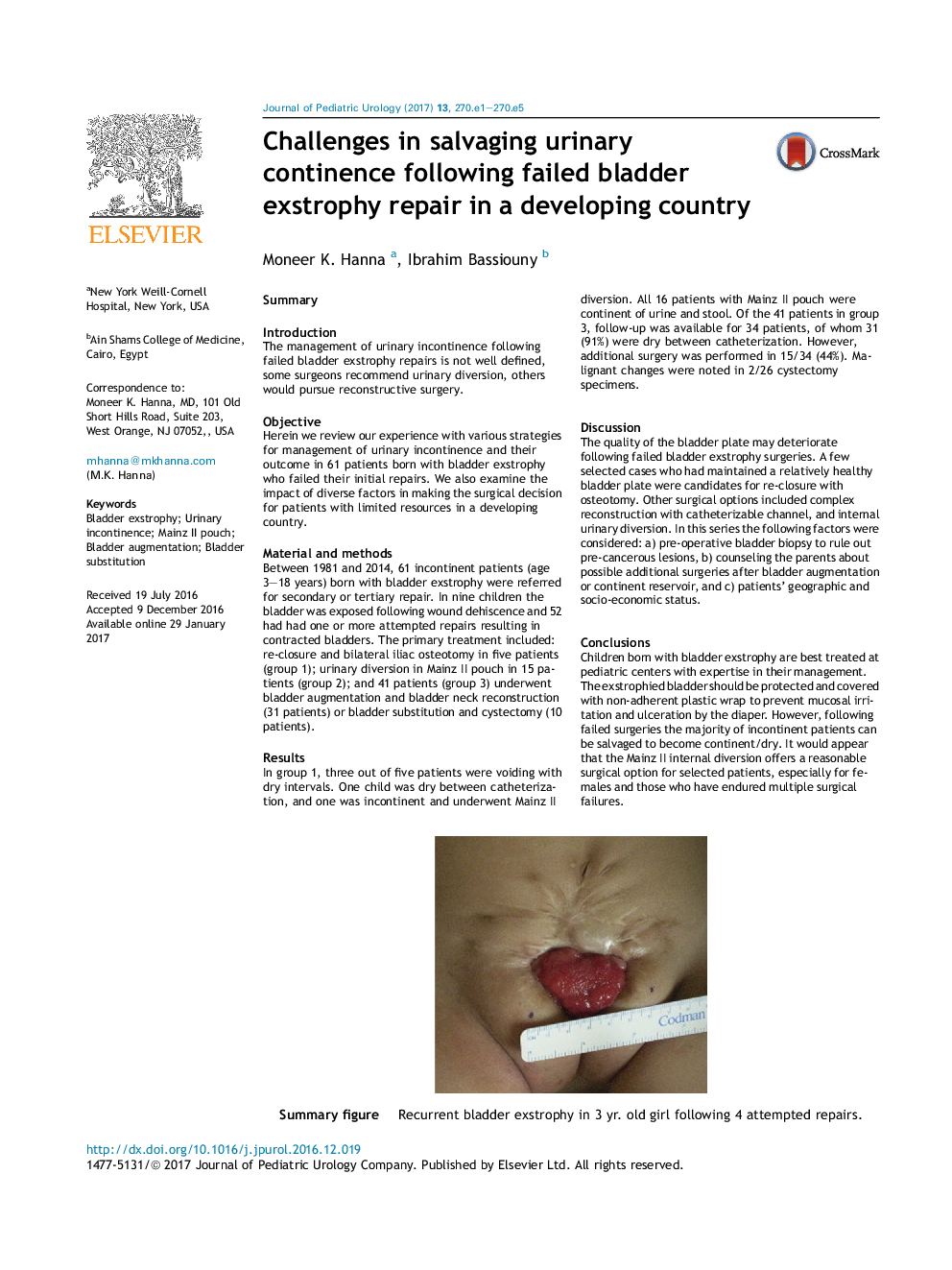| Article ID | Journal | Published Year | Pages | File Type |
|---|---|---|---|---|
| 5718588 | Journal of Pediatric Urology | 2017 | 5 Pages |
SummaryIntroductionThe management of urinary incontinence following failed bladder exstrophy repairs is not well defined, some surgeons recommend urinary diversion, others would pursue reconstructive surgery.ObjectiveHerein we review our experience with various strategies for management of urinary incontinence and their outcome in 61 patients born with bladder exstrophy who failed their initial repairs. We also examine the impact of diverse factors in making the surgical decision for patients with limited resources in a developing country.Material and methodsBetween 1981 and 2014, 61 incontinent patients (age 3-18 years) born with bladder exstrophy were referred for secondary or tertiary repair. In nine children the bladder was exposed following wound dehiscence and 52 had had one or more attempted repairs resulting in contracted bladders. The primary treatment included: re-closure and bilateral iliac osteotomy in five patients (group 1); urinary diversion in Mainz II pouch in 15 patients (group 2); and 41 patients (group 3) underwent bladder augmentation and bladder neck reconstruction (31 patients) or bladder substitution and cystectomy (10 patients).ResultsIn group 1, three out of five patients were voiding with dry intervals. One child was dry between catheterization, and one was incontinent and underwent Mainz II diversion. All 16 patients with Mainz II pouch were continent of urine and stool. Of the 41 patients in group 3, follow-up was available for 34 patients, of whom 31 (91%) were dry between catheterization. However, additional surgery was performed in 15/34 (44%). Malignant changes were noted in 2/26 cystectomy specimens.DiscussionThe quality of the bladder plate may deteriorate following failed bladder exstrophy surgeries. A few selected cases who had maintained a relatively healthy bladder plate were candidates for re-closure with osteotomy. Other surgical options included complex reconstruction with catheterizable channel, and internal urinary diversion. In this series the following factors were considered: a) pre-operative bladder biopsy to rule out pre-cancerous lesions, b) counseling the parents about possible additional surgeries after bladder augmentation or continent reservoir, and c) patients' geographic and socio-economic status.ConclusionsChildren born with bladder exstrophy are best treated at pediatric centers with expertise in their management. The exstrophied bladder should be protected and covered with non-adherent plastic wrap to prevent mucosal irritation and ulceration by the diaper. However, following failed surgeries the majority of incontinent patients can be salvaged to become continent/dry. It would appear that the Mainz II internal diversion offers a reasonable surgical option for selected patients, especially for females and those who have endured multiple surgical failures.Download high-res image (107KB)Download full-size imageSummary figure. Recurrent bladder exstrophy in 3 yr. old girl following 4 attempted repairs.
